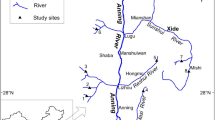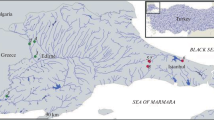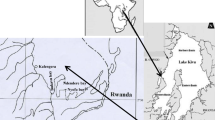Abstract
A study of feeding ecology in Trematomus hansoni Boulenger 1902 and Trematomus loennbergii Regan 1913 was carried out from samples collected in the austral summer 1990–1991 off Terra Nova Bay, Ross Sea. T. hansoni was caught between 35 and 566 m and T loennbergii between 311 and 543 m. Stomach contents analysis shows that T. loennbergii relies on a wider range of prey than T. hansoni. Fish and decapods are the main food resources of T. loennbergii, which feeds also on epifaunal and tube-dwelling polychaetes. T. hansoni mostly relies on fish resources that are made up of juvenile stages of fish and eggs. Despite the common area occupied by the two species, the interspecific competition is mostly mitigated due either to taking different prey or to taking different amounts of the same prey.
Similar content being viewed by others
Author information
Authors and Affiliations
Additional information
Received: 31 October 1995/Accepted: 20 February 1996
Rights and permissions
About this article
Cite this article
Mesa, M., Vacchi, M., Castelli, A. et al. Feeding ecology of two nototheniid fishes, Trematomus hansoni and Trematomus loennbergii, from Terra Nova Bay, Ross Sea. Polar Biol 17, 62–68 (1997). https://doi.org/10.1007/s003000050105
Published:
Issue Date:
DOI: https://doi.org/10.1007/s003000050105




